|
In their excellent Harvard Business Review article aptly titled “Big-Bang Disruption”, Paul Nunes and Larry Downes make the case that disruptive new entrants will radically transform more industries far faster than originally envisioned by Clay Christensen in his landmark treatise on this subject 18 years ago. The authors attribute the accelerating pace and scope of disruption to:
With respect to how the new generation of disruptors are likely to impact incumbent market leaders, Nunes and Downes warn: “You can’t see big-bang disruption coming. You can’t stop it. You can’t overcome it. Old-style disruption posed the innovator’s dilemma. Big-bang disruption is the innovator’s disaster. And it will be keeping executives in every industry in a cold sweat for a long time to come.” If you accept this premise (as I do), it leads inexorably to the question every company should be asking themselves: are we innovative enough to be the disruptor and not the disruptee in the next wave of transformational change in our industry? While there are a number of diagnosticsdesigned to test whether companies have a culture conducive to promote innovation, there is one salient indicator that warrants particular attention: how does your company deal with “truth-tellers”? Nunes and Downes define truth tellers as “internal or external seers who can predict the future with insight and clarity. In every industry there are a handful of these visionaries, whose talents are based on equal parts genius and complete immersion in the industry’s inner workings. They may be employees far below the ranks of senior management, working on the front lines of competition and change. They may not be your employees at all. Longtime customers, venture capitalists, industry analysts, and science fiction writers may all be truth tellers.” Truth tellers play a particularly important role in presaging the need and opportunity to develop new business models which disrupt incumbent business positions, long before the need to change becomes obvious (by which time it’s often too late to stop the destruction of your business by a disruptive newcomer). By their nature, truth-tellers make most business leaders uncomfortable:
Sadly, over a long career in senior management consulting, I’ve witnessed far too many cases where executives not only fail to continuously seek the counsel of truth-tellers, but rather willfully prevent such voices from being heard and evaluated within the organization. What are some of the mechanisms executives use to stifle truth teller input?:
0 Comments
 The New York Times carried an ominous story this week on the souring outlook for Barnes & Noble’s Nook business, portending perhaps its exit from the e-reader and tablet markets. The Nook’s decline comes despite its technical competence and the recent infusion of $600 million of capital by Microsoft. As the Times notes, “going into the 2012 Christmas season, the Nook HD, Barnes & Noble’s entrant into the 7-inch and 9-inch tablet market, was winning rave reviews from technology critics who praised its high-quality screen. Editors at CNET called it “a fantastic tablet value” and David Pogue in The New York Times told readers choosing between the Nook HD and Kindle Fire that the Nook “is the one to get.” Unfortunately, high marks from pundits didn’t translate into sales. Nook sales stalled over the Christmas season, losses mounted and profit and revenue guidance has been reduced. What happened? The Times article shares this explanation: “In many ways it is a great product,” Sarah Rotman Epps, a senior analyst at Forrester, said of the Nook tablet. “It was a failure of brand, not product. The Barnes & Noble brand is just very small.” I beg to differ. The Nook’s problems go far beyond B&N’s brand strength. There are three fundamental reasons for Nook’s failure that have implications for any company (and eventually this means every company) facing technology disruption:
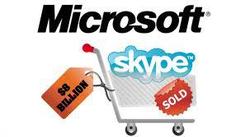 2. Disruption redux More broadly the Nook story is yet another example of how disruptive technologies transform value chains, destroying incumbents who no longer create value in the new industry order. With the advent of e-reading devices and digital publishing, book retailers and publishers are severely threatened. We’ve been to this dance before in the music industry, where incumbent retail leaders were essentially wiped out. For a variety of reasons, bookstores (if not the Nook) are likely to survive for quite some time, but only at a fraction of their former scale.Was B&N’s decline inevitable, given the transition from print to digital books? One could ask the same question of Amazon, whose dominance of book sales on amazon.com was equally threatened by e-reader technology. But to Jeff Bezos’ credit, Amazon chose to disrupt itself by aggressively launching the Kindle business, which quickly established itself as the dominant digital book platform. By the time B&N responded with its own Nook devices and e-bookstore, it was too late.The willingness to disrupt one’s own core business before someone else does it to you is a hallmark of inspired leadership. Bezos rules. 3. Stuff Happens! What’s up with Microsoft? As a play on the well known adage, “Disruption Also Happens”! In every industry, the question isn’t whether but only when. The only way to survive and prosper through successive waves of disruption is to be the disruptor, not the disruptee!One would think Microsoft would have learned this lesson by now. Over the past decade, Microsoft has managed to miss five of the most transformative disruptions in the high tech sector:
Bottom line: Serial innovation is the only proven antidote to the accelerating pace of disruptive technologies. It certainly looks like Barnes & Noble and Microsoft have not been up to the task. On June 11, 2012, Tim Cook graced the cover of Fortune Magazine, in a hagiography about the man with perhaps the hardest job in America: to succeed the legendary Steve Jobs who Fortune had already lionized as “the best CEO of the decade” and “the best entrepreneur of our time” As the Fortune piece noted: “Considering the widespread handwringing over how rudderless Apple would be without Jobs, it is remarkable how steadily the company has sailed along without him.” Time Magazine also weighed in with similar praise: “Highly ethical and always thoughtful, he projects calmness but can be tough as nails when necessary. Like the great conductor George Szell, Cook knows that his commitment to excellence is inseparable from the incredible ensemble he leads at Apple.” Such plaudits certainly seemed warranted at the time. When Fortune’s story appeared, Apple was trading at $571 per share, 52% higher than when Steve Jobs stepped down 10 months earlier. Apple’s stock and was well on its way to cresting at over $700/share in the coming months, prompting Forbes and the New York Times to speculate that Apple — already the most valuable company in the world — was well on its way to becoming the first trillion dollar market capcompany. These were heady times indeed, and Apple and Tim Cook apparently could do no wrong. Or could they? Apple’s fall from grace Less than four months after the Times wondered how soon Apple’s market cap would break the trillion dollar mark, the Wall Street Journal ran a story under the headline “Has Apple Lost Its Cool to Samsung?” CNN had already scooped the Journal, with its own version of: “Is Apple Losing Its Cool Factor?” And what about Tim Cook, the Szell-like conductor of Apple’s innovation band? In mid-January,The Motley Fool asked “Is Tim Cook The Next Steve Ballmer?” which was not meant as a compliment. And two weeks later, Forbes Magazine weighed in with “The Problem with Tim Cook“, raising serious questions about whether Tim Cook was up to the job! What’s going on here?! Sure, there were a couple of missteps with Apple Maps, perceived missing features in the iPhone 5 and the still-unfulfilled promise of Apple iTV. But these events hardly seemed damning enough to signal a cataclysmic reversal of fortune. Can Tim Cook and the company he leads really go from a heavy dose of smarts to serious ineptitude in just four months? Has Apple really lost its mojo and its cool to Samsung, who for so long toiled in the obscurity of Apple’s giant shadow? The Halo Effect Earl Weaver, the Hall-of-Fame manager of the Baltimore Orioles twenty-five years ago opined an answer to these questions, which is as true in business as it is in baseball: “You’re never as bad as you look when you’re losing, nor as good as you seem when you’re winning” There is actually considerable academic research validating Weaver’s sage advice, that falls under the rubric of “The Halo Effect”. In IMD Professor Phil Rosenzweig’s excellent book of the same name, the Halo Effect is defined as the consistent tendency for people to ascribe positive ratings (particularly on subjective assessments like “executive vision” or “leadership”) when the overall measurable performance of a company is good, while tending to be overly critical of management when business outcomes display signs of weakness. One can see this for example in the glowing praise of successful business leaders (such as Reed Hastings of Netflix, Fortune’s 2010 CEO of the year) as “visionary, dynamic and customer-focused”, only to have the very same CEO widely vilified as “complacent, arrogant and unwilling to respond to customer preferences” one year later when the company’s financial performance stumbled. The Halo Effect probably hit bottom for Hastings when SNL parodied him in a bitingly funny skit in 2011. ABB’s Percy Barnevik, GE’s Jack Welch and Groupon’s Andrew Mason are other examples of executives who have felt the sting of hyperbolic punditocracy. It’s fair to say that Tim Cook is the latest victim of the Halo Effect – neither worthy of his early sanctification, nor deserving of his asserted fall from grace. As usual, the business press has been too quick to praise and condemn a man who, in reality has not changed the very essence of his being in just four months! Let’s get real So what can we expect from Apple in the months and years ahead? In my view, there are two parts to answering this question:
But as good as any of these products are, the simple fact remains that over time, continued improvements yield marginally decreasing utility to consumers. Take Apple’s biggest success to date for example, the iPhone. When the first generation iPhone went on sale in the summer of 2007, it was received with unprecedented global enthusiasm, teasingly dubbed by The Economist as “The Jesus Phone”. And no wonder…it’s design, user interface, functionality and apps support were so radically different and better than any other smartphone on the market that it appeared to many to be miraculously conceived! By the time early adopters’ initial two-year contracts were up, Apple had unveiled its next generation iPhone, the 3GS with faster digital download speeds, an improved camera and considerably more apps. And in every year thereafter, Apple continued to enhance the iPhone. The iPhone 4/4S/5 got progressively, thinner, lighter, brighter (displays), faster, better (cameras), and eventually marginally bigger. While each new version was better than the last, none had the breakthrough market impact of the initial iPhone. Economists have long recognized the marginal decreasing utility – more prosaically, the “wow” factor — associated with virtually every product in the market over time. For example, except for the most extreme technophiles, most consumers hardly notice the latest generation PC, home printer, digital camera or even automobile these days – a far cry from when the first primitive versions of these revolutionary products first hit the market.
Seen in this light, the fact that Apple’s latest iPhone lacks NFC capability or the best-in-class screen size or the highest megapixel camera does not necessarily signal the end of their innovative spirit. Even if an iPhone 6 were released tomorrow with all of these features, it would fail to create the buzz of the first “Jesus Phone”. Relatedly, it’s entirely to be expected that Samsung and others have largely caught up to Apple on most of the features and functions that define state-of-the-art smartphones. If you have any doubt whether this is a unique failing of Apple, just ask BMW how they would compare their vehicles to the best Hyundai has to offer today vs. ten years ago. Competition happens, and no one is suggesting that BMW has lost its edge. Where now? So what will it take for Apple to continue to be, well, Apple? Its unique challenge is not just to stay abreast of the relentless demands for continuous improvement in its current core products — daunting enough against competitors like Samsung, Google and Microsoft. It is to find thenext breakthrough product category that will once again disrupt a large business value chain to Apple’s profound benefit. A rumored rendition of an Apple “iTV” home entertainment ecosystem is probably the most likely possibility. Critics of Apple should realize that epic business disruptions do NOT operate on a predictable product release timetable, and it is clearly premature to condemn Tim Cook for not pulling another blockbuster rabbit from under his hat during his eighteen months as CEO. Expecting Tim Cook to continue Apple’s growth to unprecedented levels on an arbitrarily imposed timetable is simply not a reasonable standard by which to judge CEO performance. While it is still too early to pronounce judgment on whether Apple’s astonishing string of revolutionary product launches has run its course, the clock is definitely ticking. Businesses are constantly seeking new products, services and business models to create widespread market appeal. But one of the mistakes innovators often make is underestimating the challenge of getting consumers to change their behavior and beliefs in order to realize the benefits of a promising new product. Numerous tomes have been written on overcoming this challenge, perhaps most notably by VC Geoffrey Moore, who shares his wisdom on how to move beyond early adopters to reach the mass market in his 1991 classic, Crossing the Chasm. Spoiler alert: Moore notes that most new technology ventures fail to get across the abyss! So how do companies that launch businesses requiring the marketplace to radically rethink their preconceived notions of product attributes get consumers to change their beliefs and behavior? For starters, successful products of this type — either high or low tech — must inherently have a killer value proposition — e.g. the original Apple McIntosh or Timex watch. But the fact remains that lots of products with breakthrough potential fail to gain market acceptance. One of the key lessons learned from a number of products that have crossed the chasm to widespread market appeal is the use of jarring advertising campaigns with explosive imagery to literally blow up consumers’ comfort with old habits and category norms. Here are some of the best examples: 1. The Apple McIntosh Launch, 1984 In this iconic commercial, considered by many to be the best TV spot of all time, a renegade female warrior hurls a sledgehammer that explosively shatters an IMAX-size screen image of an Orwellian dictator, thinly disguised as the leader of the Microsoft evil empire. A picture is worth a thousand words, so if you haven’t seen this ad recently, check it out. Adding to its mystique, this ad was broadcast only once, during the 1984 Super Bowl. YouTube views since measure in the millions. Adding to its mystique, this ad was broadcast only once, during the 1984 Super Bowl. YouTube views since measure in the millions. ————————————————————————————————————-- 2. The Timex Watch Launch, 1951 In 1951, Timex introduced the world’s first low priced, highly reliable/rugged wristwatch. Prior to Timex’ launch, wristwatches came in only two “flavors”. Most common were high-priced timepieces utilizing precious jewels in the mechanical movements and casing. Watches of this type were sold exclusively through jewelry stores at prices in excess of $300. These luxury products defined the wristwatch category for many generations, and were often considered family heirlooms. On the other end of the spectrum, watchmakers’ attempts to create lower priced alternatives with cheaper materials generally yielded poor quality, unreliable substitutes, largely shunned by consumers. Timex developed a way to produce low-cost mechanical movements that used hard alloy metals in place of jewels. These new alloy bearings not only lowered the cost of goods, they made automated production easier, further lowering costs. The net result was an extremely accurate and rugged wristwatch sold by drugstores and mass market outlets at prices as low as $6.95! The problem facing Timex was how overcome consumers’ preconceived notion that cheap watches connoted shoddy quality. How did they do it? Once again by blowing up prevailing consumer views with a successful ad campaign under the banner “Takes A Lickin’ And Keeps On Tickin’ “. In each of these ads, a Timex watch was exposed to a draconian torture test (some on live television!) to demonstrate the accuracy and ruggedness of the product. Take a look at this vintage clip for example, where a Timex is strapped to the tip of an arrow and shot by a bowman through a pane of glass (the shattering glass motif, redux), into a wall before dropping into a fish tank filled with water. Needless to say, Timex watches always survived the lickin’ and kept on tickin’! By literallyshattering the prevailing consumer image of cheap watches , Timex emerged as the market leader, selling one out of every three watches in the US by the end of the 1950’s. ————————————————————————————————————-- 3. SodaStream Banned Super Bowl Ad, 2013 Fast forward to Super Bowl 47 in 2013. One of the game’s ad sponsors — SodaStream — made quite a splash literally and figuratively by having its ads banned by CBS. What was considered a banish-able offense by the game’s broadcaster? See for yourself. SodaStream’s use of exploding glass — in this case bottles of Coke and Pepsi (themselves perennial heavy advertisers of the Super Bowl) — underscores Sodastream’s marketing challenge. Generations of consumers have been brought up consuming soft drinks from bottles whose signature design are an American icon. To communicate the benefits of a radically different approach to soft drink home consumption, SodaStream used — you guessed it — the exploding glass motif to blow up consumers’ prior behavior and beliefs. Within a week of the Super Bowl, Sodastream’s banned ad had been seen by almost 5 million viewers on YouTube. And the company’s sales have been recently growing by ~50% per year, so obviously SodaStream’s message is getting through to the marketplace. ————————————————————————————————————-- 4. IKEA Unböring Ads, 2003 In 2003, IKEA unveiled its “Unböring” campaign aimed at shattering consumers’ preconceived unflattering notions about home furnishings. The prevailing consumer view was that furniture is boring and shopping is unpleasant — to be avoided at all costs. One market study at the time suggested that Americans tended to change spouses more often than dining room tables! IKEA’s “Unböring” ads jarringly attacked its dreary category image, in one case calling customers attached to their current unstylish furnishings as “crazy”, and in another, having a woman commenting on her bored-to-death furniture and life with the epithet: “That Sucks!” This latter ad uses more of an implosion than explosion to make the point, but the intent is the same as the other cases noted above: to shatter consumers’ preconceived category norms. Check out the IKEA’s Unböring” ad here.
————————————————————————————————————-- The Bottom Line The lesson learned is that to shake consumers out of old habits and/or preconceived unflattering category norms, companies need to be as innovative in their marketing approach as they are in new product design. No matter how compelling its advantages, if your new product requires consumers to radically rethink their behavior and marketplace beliefs , you will probably need to find ways to jar consumers out of their current mindsets. You may want to look no further than the shattering glass motif to launch your next breakthrough product. Rumors are flying that Apple has a cheap iPhone in the works. Coming on the heels of the iPad Mini, a growing chorus of groans is hitting the Twitterverse and blogosphere (to use two horrific terms) bemoaning that Apple is turning its back on Steve Jobs’ obsessive commitment to über product superiority; i.e. the best or nothing!
Perhaps. But consider this:
values. I’ve seen little evidence that Apple is moving in either of these undesirable directions. But like all great companies, the brand is only as good as its newest products. Roll on. |
Len ShermanAfter 40 years in management consulting and venture capital, I joined the faculty of Columbia Business School, teaching courses in business strategy and corporate entrepreneurship Categories
All
Archives by title
How MIT Dragged Uber Through Public Relations Hell Is Softbank Uber's Savior? Why Can't Uber Make Money? Looking For Growth In All The Wrong Places Three Management Ideas That Need to Die Wells Fargo and the Lobster In the Pot Jumping to the Wrong Conclusions on the AT&T/Time Warner Merger What Kind Of Products Are You Really Selling? What Shakespeare Thinks About Brian Williams Are Customer-Friendly CEO’s Bad for Business? Uncharted Waters: What to Make Of Amazon’s Chronic Lack of Profits What Happens When David Becomes Goliath…Are Large Corporations Destined To Fail? Advice to Publishers: Don’t Fight For Your Honor, Fight For Your Lives! Amazon should be viewed as a fierce competitor in its dispute with publisher Hachette Men (And Women) Behaving Badly Why some brands “just don’t get no respect!” Courage and Faustian Bargains Sun Tzu and the Art of Disrupting Higher Education Nobody Cares What You Think! Product Complexity: Less Can Be More Apple's Product Strategy: No News Is Good News Willful Suspension of Belief In The Book Publishing Industry Whither Higher Education Timing Is Everything Teachable Moments -- The Curious Case of JC Penney What Dogs Can Teach Us About Business Are You Ready For Big-Bang Disruption? When Being Good Isn’t Good Enough Is Apple Losing Its Mojo? Blowing Up Old Habits What Is Apple's Product Strategy--Strategic Rigidity or Enlightened Expansion Strategic Inertia Strategic Alignment Strategic Clarity Archives by date
March 2018
|
Proudly powered by Weebly



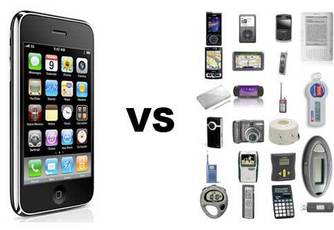
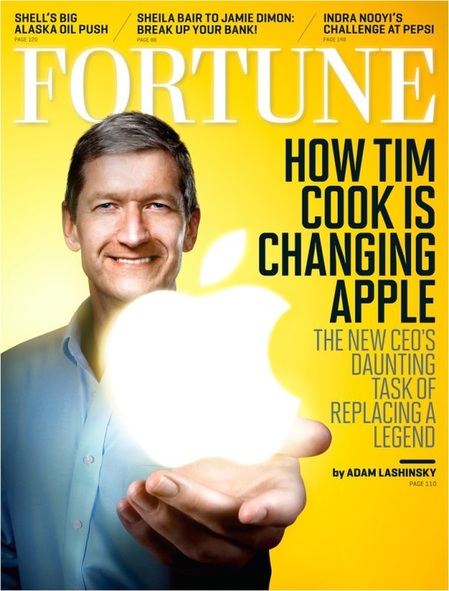
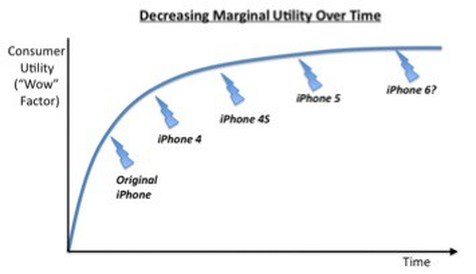
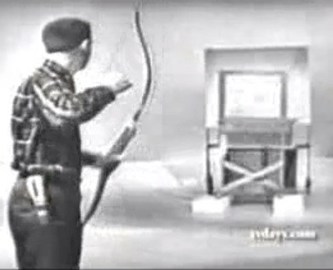


 RSS Feed
RSS Feed